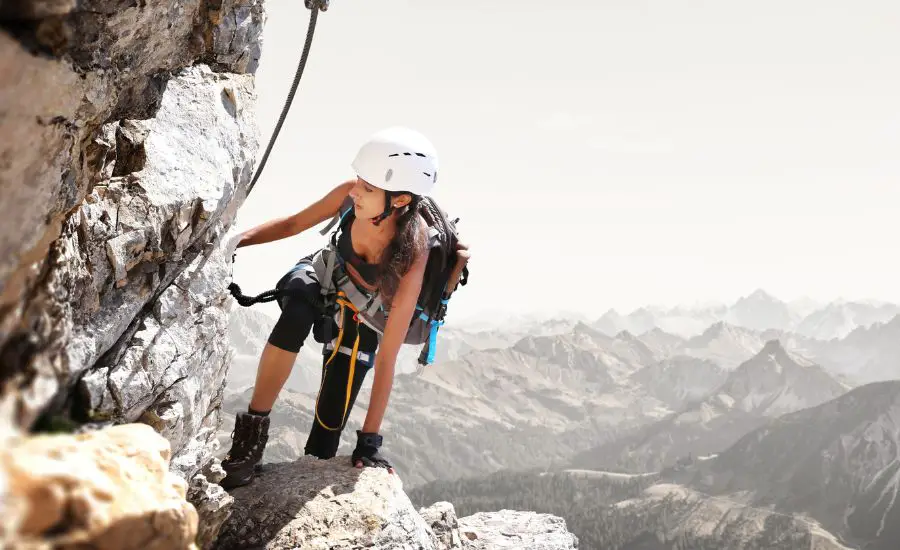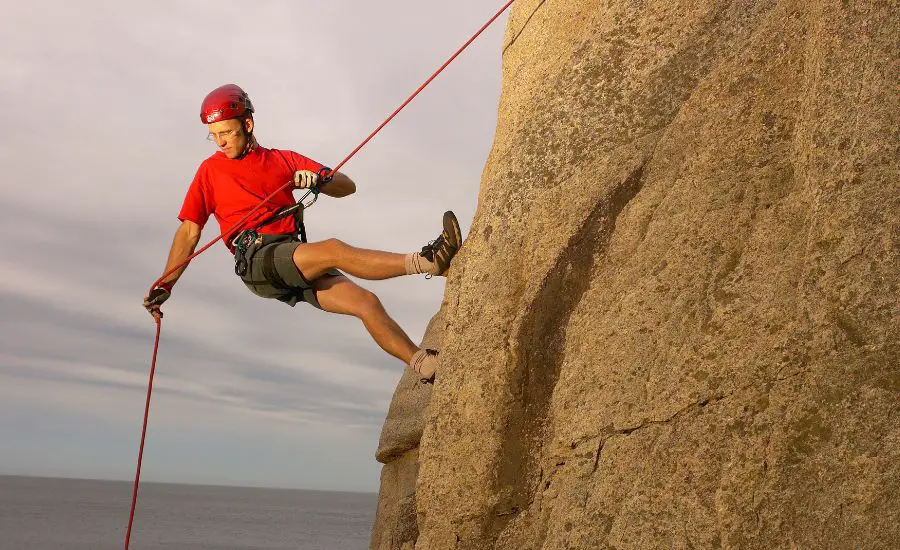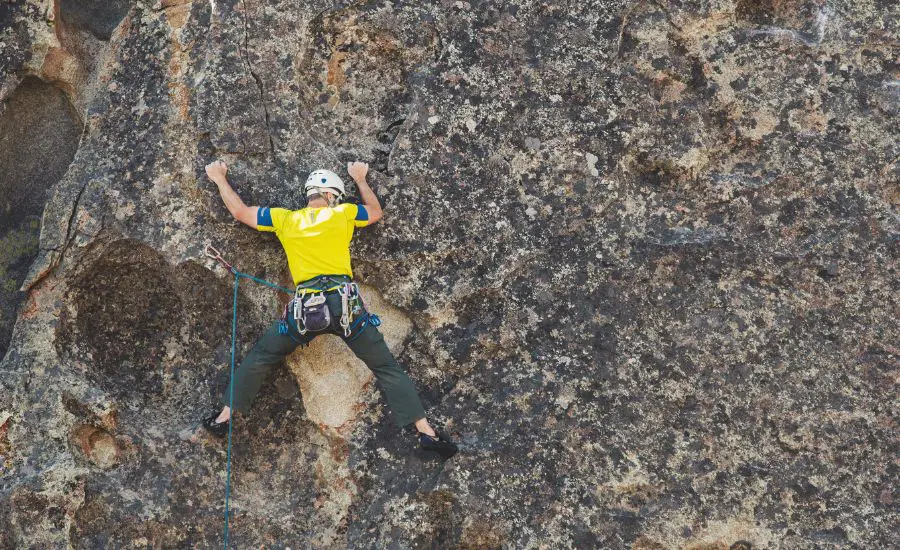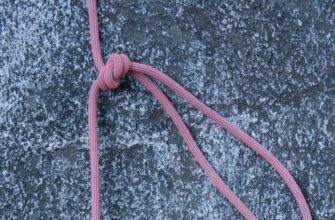Many people who start climbing or intend to go climbing are often interested in the meaning of body weight in rock climbing activities.
This question often be asked for a reason. Let’s make it clear.

- Indoor and outdoor rock climbing
- Weight Limit For Rock Climbing: The indoor weight limit
- The outdoor weight limit
- More about climbing facilities
- Belaying
- Auto-belays
- Techniques and safety rules
- Different aspects of rock climbing when you’re overweight
- Frequently asked questions
- Question 1 – Can you be too heavy for rock climbing?
- Question 2 – How much can you weigh to rock climb?
- Question 3 – Does weight matter in rock climbing?
- Question 4 – Is rock climbing easier if you weigh less?
- Conclusion
Indoor and outdoor rock climbing
You may rock climb either indoors or outdoors. There are a lot of differences between these two types of climbing areas. The main differences are availability, climate conditions, equipment, surface, and landings.
Outdoor rock climbing is commonly recommended for experienced climbers.
If you want to rock climb indoors, you can easily find a proper climbing gym in your city using the map of commercial climbing facilities with a climbing wall.
In general, the weight limit for rock climbing is not a critical parameter for both outdoor and indoor rock climbing. But there are some nuances and subtleties.

Weight Limit For Rock Climbing: The indoor weight limit
If you go rock climbing indoors, you can feel safe because mostly there are no weight limits. Usually, a high-quality climbing harness can withstand weights from 2000 lbs of force (waist belt) to 3000 lbs of force (belay rope). These values give you confidence that these climbing ropes will not break during rock climbing.
But in many climbing gyms, the sizes of harnesses are restricted, and for larger climbers, it would be hard to fit in. For this case, you should bring the right size gear with you.
Some climbing facilities mention weight limits in their guidelines for auto-belay systems. It is the type of belay device that allows rock climbers to practice rock climbing without any help of a partner, typically called a belayer.
Almost all climbing facilities and gyms have a website and contact number. To make sure that they do not have any weight limit for rock climbing, please, message them for your own safety.

The outdoor weight limit
Rock climbing in nature is more challenging than doing it in a climbing gym. In addition to the difference between climbing gear, also you need a lot of skill and a certain fitness level.
You must consider cases of tearing off pieces of rock while climbing on a rock face. It can happen at any body weight.
But in general, as in climbing facilities, there is no weight limit for climbing outdoors. In climbing activities, an important criterion is your stamina, especially your strength-to-weight ratio. Your desire, passion, and motivation to engage in this activity are crucial as well.
More about climbing facilities
If you are new to rock climbing and belong to the category of overweight climbers, then you should start your workouts indoors. You can rock climbing there with your friends or acquaintances.
The only difficulty that may arise is the unsuitable harness and maximum weight limit for auto-belay devices. If you come with friends or relatives, then you can ask them to act as a belayer.
Belaying
Belaying in rock climbing is an important technique used to guarantee the safety of rock climbers during climbing. It involves controlling the rope which is attached to a climber, often through a harness or climbing device, in order to protect against an uncontrolled fall.
There is no upper weight limit for the belay technique, but need to be careful when it is a significant weight difference between rock climber and belayer. With proper gear and a good instructor, you can climb when your belayer has less weight than you.
There are few opportunities to increase a belayer’s “weight”. First of all, many climbing facilities have specially weighted sandbags to which a rope or harness is attached.
This adds extra weight if the belayer is lighter than the climber.
Secondly, you may increase friction to dampen the sudden tension of the rope when falling by using your own quickdraw in the first vacant anchor of the neighboring root. And last but not least, you can ask a second person to belay you.
Also, if there is a significant weight difference between the climber and the belayer, the OHM device will help in this case. The OHM device is a device that allows you to increase the friction of the rope so that the lighter belayer can hold the heavier climber without any harm to himself.
You can use thicker ropes for belaying as well. Thin rope can break easily and has less friction than thick rope. Also, proper communication with the belayer through various commands allows you to avoid unpleasant situations and injuries.

Auto-belays
We mentioned before that some climbing facilities have weight limits for using auto-belays. Professional climbers recommend a minimum weight for auto-belay of around 22 lbs and a maximum weight of 265 lbs.
But some auto-belay can withstand more than 265 lbs. There are some decisions for heavier climbers: Perfect Descent Auto Belay (308 lbs), TruBlue Auto Belay (330 lbs), and QuickJump Free Fall Device (286 lbs).
Techniques and safety rules
As in any sport, it is important to follow the safety rules and techniques of performing movements in rock climbing. For heavier climbers, it’s recommended to do all your movements slowly and carefully.
To reduce the risks of sudden falls, you should practice good technique of rock climbing. Successful rock climbers use their legs to push their bodies, instead of getting up a rock face relying on their arms.
For heavier climbers, it is essential to train footwork in order to withstand more weight with their feet. If you step on the climbing hold wrong and slip off, it may cause serious injury.
So it is crucial to use correct and suitable footwear.
Also, make sure that you use the appropriate gear. Before climbing, inspect your harness, helmet, and all connections between the rope and harness. If not everything, then almost everything depends on how good and qualitative your gear is.

Different aspects of rock climbing when you’re overweight
There are several positive moments of rock climbing for overweight people.
The most significant benefit of this type of activity is weight loss. Just half an hour of rock climbing burns more calories (around 330) than playing football, basketball, or volleyball. If you exercise longer and more often, you can easily lose weight.
The second advantage of rock climbing is the attractiveness of this type of activity as a way to improve your social and communication skills. Climbing communities are often inclusive and supportive, celebrating progress rather than appearance. Rock climbing allows you to improve skills such as cooperation and teamwork when climbing with a belayer. You can also make friends in these communities.
Thirdly, rock climbing allows you to boost your confidence and conquer your fears. If you are afraid of heights, you can step-by-step diminish this fear by conquering new heights. By doing rock climbing for a long time, you will lose weight and thus gain more self-confidence. There is also some scientific evidence that rock climbing can improve working memory by 50%, as well as reduce the risk of depression and mental disorders.
Although for the most part, climbing is only beneficial for overweight people, there are still some negative points.
The first is the gear issues. Most climbing harnesses are designed for standard sizes and are not fit for overweight climbers. For these cases, you will have to ask the administrators of the climbing facilities for additional equipment or order harnesses from the manufacturers specifically for your size.
Secondly, it is easier to get injured while climbing if you’re an overweight person. You must be careful, and you need to perform your steps slowly. Before rock climbing, you need to warm up for 10-20 minutes.
And thirdly, as we mentioned before, there may be weight restrictions in some gyms for auto-belay.

Frequently asked questions
Question 1 – Can you be too heavy for rock climbing?
Answer – There are no weight restrictions, the main thing is you should be ready for heavy loads and have a desire to improve yourself in rock climbing.
Question 2 – How much can you weigh to rock climb?
Answer – There is no ideal weight for rock climbing, but some rock climbers with great experience advise climbing if you weigh in the region of 22 lbs to 265 lbs. But still, feel free to go rock climbing because modern solutions allow people to do it, no matter how much weight you apply to the harness.
Question 3 – Does weight matter in rock climbing?
Answer – Weight does not play a decisive role, the strength-to-weight ratio is important. But in the future, it will be better if you lose weight. Of course, more weight leads to a higher risk of getting injured, so you should be patient and keep safety rules.
Question 4 – Is rock climbing easier if you weigh less?
Answer – It is impossible to unambiguously answer this question. On the one hand, if you weigh lighter, then many restrictions will be removed for you, but at the same time, being lightweight without muscle strength and joint strength will not give you any advantages in rock climbing.
Conclusion
Don’t be afraid of rock climbing when you’re overweight because it will give you a lot of positive moments. You will have several options if you’re overweight: climbing with a belayer, using special gear for your body, using slow techniques, and so on. The most important thing is to always believe in yourself and your strengths, and you will definitely succeed in what you desire and become a good rock climber.










